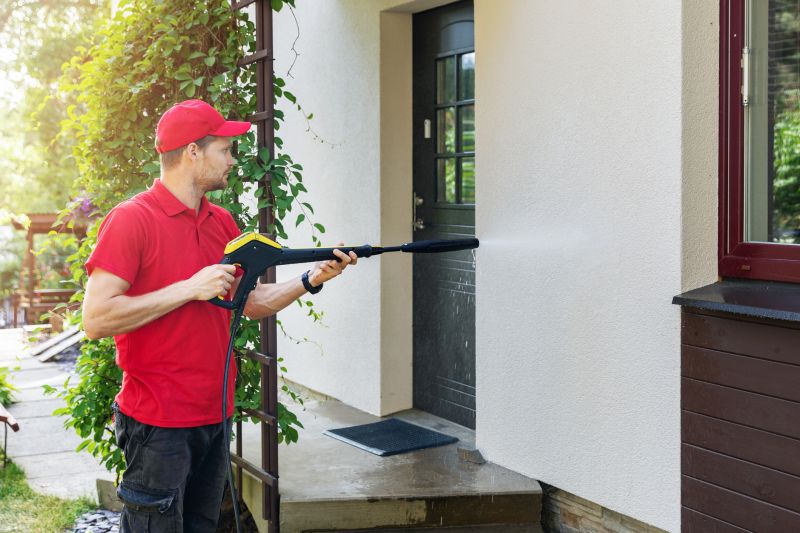Popular Tools and Materials for Siding Service Projects
Identify the most used and effective products that streamline siding installation, repair, and maintenance tasks.
 In the realm of siding services, selecting the right products is essential for achieving durable and visually appealing results. From preparation to finishing, a variety of tools and materials are used to ensure the siding installation or repair process is efficient and effective. Proper selection of siding products can influence the longevity, maintenance needs, and overall appearance of a building's exterior. Whether working on residential or commercial properties, understanding the options available can help contractors and homeowners make informed decisions tailored to their specific needs.
In the realm of siding services, selecting the right products is essential for achieving durable and visually appealing results. From preparation to finishing, a variety of tools and materials are used to ensure the siding installation or repair process is efficient and effective. Proper selection of siding products can influence the longevity, maintenance needs, and overall appearance of a building's exterior. Whether working on residential or commercial properties, understanding the options available can help contractors and homeowners make informed decisions tailored to their specific needs.
Top Overall Option
Universal Siding Installation Kit
A comprehensive siding installation kit that includes a variety of essential tools and accessories designed to facilitate efficient and precise siding projects. It typically features durable fasteners, sealants, measuring tools, and cutting equipment, making it suitable for a range of siding materials and styles. This kit is valued for its versatility and convenience, serving both professional contractors and dedicated DIYers seeking a reliable set of products for siding service.
Types of Products For Siding Service
Vinyl Siding Panels
Flexible, weather-resistant panels available in various styles and colors to suit different architectural preferences.
Fiber Cement Boards
Durable, low-maintenance panels that mimic the appearance of wood or masonry, offering increased resistance to pests and moisture.
Wood Siding
Natural material options including clapboard, shingles, or planks, valued for their aesthetic appeal and traditional look.
Metal Siding Sheets
Corrugated or smooth panels made from steel or aluminum, suitable for modern or industrial designs.
Siding Adhesives and Sealants
Specialized products used to secure siding panels and seal joints against moisture intrusion.
Fasteners and Nails
Corrosion-resistant nails and screws designed for securing siding materials firmly in place.
Siding Removal Tools
Tools like siding knives and pry bars that facilitate safe and efficient removal of old or damaged siding.
Measuring and Leveling Tools
Accurate tapes, squares, and levelers to ensure proper alignment and installation precision.
Cleaning and Maintenance Products
Solutions designed for periodic cleaning and protective coatings to extend siding lifespan.
Insulation Boards
Materials used behind siding to improve thermal efficiency and reduce energy costs.
Corner and Trim Pieces
Accessories that provide clean edges and finishing touches around windows, doors, and corners.
Underlayment Materials
Protective layers installed beneath siding to prevent moisture penetration and improve durability.
Weather Barriers
Breathable membranes that shield the structure from water infiltration while allowing vapor escape.
Siding Repair Patches
Pre-cut patches and repair kits used to fix small damages or holes in siding panels.
Roof and Siding Flashing
Metal strips that direct water away from critical joints and intersections to prevent leaks.
Popular Choices
Widely used for their affordability and ease of installation, available in numerous styles and colors.
Known for durability and low maintenance, offering a variety of textures to mimic traditional materials.
Chosen for their longevity and modern appearance, suitable for various architectural styles.
Popular for sealing joints and preventing water intrusion, available in different formulations for specific needs.
Commonly selected for securing siding panels due to their durability and rust resistance.
Essential for safely removing old siding without damaging underlying surfaces.
Frequently used to ensure straight and even siding installation.
Popular for maintaining siding appearance and preventing buildup of dirt and grime.
Increasingly chosen for energy efficiency improvements behind siding installations.
Commonly used to achieve a finished look and protect edges.
Trusted for preventing moisture penetration in various climates.
Popular for quick fixes and small damages in siding panels.
The process begins with the choice of siding material, which can range from vinyl and fiber cement to wood and metal. Each material offers unique benefits and considerations, such as resistance to weather, ease of installation, and aesthetic versatility. Complementing these are accessories like adhesives, sealants, and fasteners, which play a vital role in securing siding panels and preventing issues like moisture intrusion or wind damage. Additionally, specialized tools like siding removal knives, measuring tapes, and levelers are necessary for precise installation and repairs.
Proper maintenance products also form a crucial part of siding service, including cleaning solutions and protective coatings designed to extend the lifespan of the siding. When selecting products, factors such as climate conditions, building design, and budget constraints should be taken into account. With the right combination of materials and tools, professionals and DIY enthusiasts can ensure that siding projects are completed efficiently and with lasting results. In the following sections, we will highlight a top overall product choice, trending options, and key considerations to keep in mind during your selection process.
Key Buying Considerations
- Material durability and resistance to weather elements
- Compatibility with existing siding or building design
- Ease of installation and available tools
- Maintenance requirements and longevity
- Cost and budget constraints
- Aesthetic options including colors and textures
- Compatibility with insulation and energy efficiency goals
- Resistance to pests, mold, and rot
- Availability of replacement parts and accessories
- Local climate suitability and exposure conditions
- Ease of cleaning and upkeep
- Environmental factors affecting material choice
- Warranty and manufacturer support
- Safety features during installation
- Environmental impact and VOC emissions
